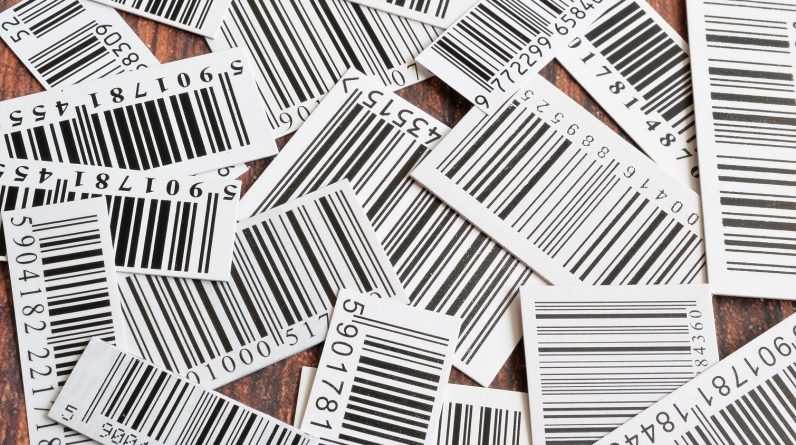
Barcodes are essential tools for businesses that process high volumes of products. Buy Barcodes can identify products quickly and efficiently, making them a vital tool for global commerce. However, there are various barcode systems available, and it can be confusing to understand which one is best for your requirements. The two most commonly used barcode standards are UPC and EAN barcodes. In this blog post, we will take a closer look at these barcode standards, the differences between them, and their advantages. We will also provide a step-by-step guide on how to create UPC and EAN barcodes, common mistakes to avoid while utilizing them, and how to prevent counterfeiting while using these barcodes. By the end of this post, you will have a better understanding of which barcode system is most suitable for your business’s global commerce requirements.
What is a barcode?
A barcode is a unique identifier that is used to represent products in the market. It is an image with black bars and white spaces that is scanned by computers. GTIN is the unique identifier for products that is represented by barcodes. The most common barcodes used today are the Universal Product Code (UPC) and the European Article Number (EAN). These barcodes contain 13 digits to represent a particular product, details such as type, features, and the product’s country of origin. While UPC is mainly used in North America, EAN is used for products sold globally, except for North America. Barcodes make it easy to track products in the supply chain, which helps businesses manage their inventory efficiently.
Overview of UPC and EAN barcodes
Barcode standards such as UPC and EAN are crucial for global commerce. They encode Global Trade Item Numbers (GTIN) and are recognized by retailers and distributors worldwide. UPC is a 12-digit barcode extensively used in North America, while the EAN is a 13-digit barcode widely used in the rest of the world. The GS1 System of international standards governs both EAN and UPC barcodes. These codes originated in the 1970s and have several variations that support different densities and sizes. UPC/EAN barcodes are ideal for practical and straightforward applications, from large warehouses with a vast inventory to specialty shops with strict constraints on barcode size. There is no denying that UPC/EAN barcodes have revolutionized today’s retail sector, streamlining and simplifying the entire product identification process.
Differences between UPC and EAN barcodes
UPC (Universal Product Code) and EAN (European Article Number) barcodes are two of the most commonly used barcode standards worldwide. While UPCs contain 12 digits and are used in North America, EANs have 13 digits and are used in other parts of the world. Both barcode types are part of the Global Standards 1 (GS1) international standards. UPCs were introduced in the 1970s and were later expanded to include a country code in front of the barcode number, increasing it to 13 digits for EANs. Both barcode standards serve the same purpose of identifying products and have similar visual appearances, except for the country code. Understanding the differences between UPC and EAN codes is critical for businesses that operate on a global scale.
Advantages of using UPC and EAN barcodes
Barcodes are used worldwide for product identification and management. The two most common types of barcodes are UPC and EAN. UPCs are 12-digit barcodes that are primarily used in North America, while EANs are 13-digit barcodes used all around the world. Buy Barcodes and The advantage of using EANs is their wide acceptance globally, and they provide more information in a smaller barcode.
Both formats are part of the GS1 System of international standards, meaning they are accepted worldwide. It’s important to note that barcodes issued by iMusician cannot be used for physical products. When deciding which type of barcode to use, it’s essential to consider where the product will be sold and distributed. Using the correct barcode system for a specific region avoids confusion, streamlines processes, and ensures a product’s timely delivery.
Steps for creating UPC and EAN barcodes
UPC and EAN barcodes are both part of the Global Standards 1 (GS1) international standards and are used to identify products for retail checkout or tracking purposes. UPC codes are 12-digit barcodes used in North America, while EAN codes are 13-digit barcodes used in Europe, Asia, and Australia. The Universal Product Code (UPC) was primarily designed to standardize the checkout process. However, the European Article Number (EAN) was created as a superset of the UPC code, designed to enhance product tracking capabilities.
To create a UPC or EAN barcode, you need to generate a code number, which is unique to your product, from the GS1 organization. Your product information and the code number is then encoded and reflected in the barcode. After encoding, the barcode will then need to be printed onto the product or product packaging. The encoding process ensures that the barcode is unique and assigned to a specific product, and this helps in the tracking and identification of products during transportation and retail checkout.
Common mistakes related to using UPC and EAN barcodes
While UPC and EAN barcodes are widely used in global commerce, there are common mistakes that people make when using them. One common mistake is using North American UPC codes in other countries without the proper EAN country code. This can cause issues with scanning and inventory tracking. Another mistake is not understanding the differences between UPC and EAN codes, which can lead to improper use and scanning errors.
Another common mistake is using the wrong message length when printing barcodes. This can cause issues with readability and scanning accuracy. It’s also important to register your barcodes with the appropriate GS1 organization to ensure that they are unique and properly identified. Finally, failing to update existing UPC codes with new EAN codes can cause issues with inventory tracking and supply chain management. By avoiding these common mistakes, businesses can streamline their operations and reduce errors when working with UPC and EAN barcodes.
How to avoid counterfeiting while using UPC and EAN barcodes
Counterfeit products have become a significant problem for businesses, resulting in lost revenue and damaged reputation. To avoid counterfeiting, it is important to use legitimate UPC and EAN barcodes. One way to ensure legitimacy is by using the GS1 System of international standards, which guarantees that your barcodes will be accepted globally by major retailers. Consider seeking consulting services from GS1 to help ensure that your product number assignment is error-free. Each product should have a unique identifier using UPC or EAN barcodes to prevent duplicate product numbers. Proper and up-to-date product labeling will also help avoid counterfeiting. However, it’s important to note that using the GS1 System imposes associated fees that should be factored in when deciding to use their services. By following these steps, businesses can reduce their risk of counterfeiting and ensure that their products comply with global barcode standards.
Frequently Asked Questions
What are the differences between UPC and EAN barcodes?
UPC (Universal Product Code) and EAN (European Article Number) barcodes are both types of barcode standards used in retail. The main difference between the two is that UPC barcodes are commonly used in North America and only have 12 digits, while EAN barcodes are used internationally and have 13 digits.
UPC codes also start with a country code, while EAN codes start with a “0” or “1” to indicate the type of barcode. EAN codes also have a larger number range which allows for more products to be identified. However, both UPC and EAN barcodes serve the same purpose of identifying products for inventory and sales tracking.
When should I use a UPC barcode versus an EAN barcode?
The decision to use a UPC barcode versus an EAN barcode depends on the location where the product will be sold. UPC barcodes are commonly used in North America and are typically 12 digits long. EAN barcodes, on the other hand, are used internationally and are typically 13 digits long. If you plan to sell your product in North America, use a UPC barcode. If you plan to sell your product internationally, use an EAN barcode.
Do different countries have different requirements for barcodes?
Yes, different countries may have different requirements for barcodes. Some countries may require specific barcode formats or encoding standards, while others may have specific labeling or printing requirements for products that use barcodes. Therefore, it is important to be aware of the specific requirements for each country where your product will be sold and ensure that your barcodes meet those requirements.
What industries commonly use barcodes for their products?
Many industries use barcodes to track their products and manage inventory. Some of the most common industries include retail, manufacturing, logistics, healthcare, and food and beverage. Barcodes help these industries streamline operations, reduce errors, and improve efficiency. They are an essential tool for companies looking to optimize their supply chain and improve their bottom line.
Conclusion
Barcodes are an integral component of the modern retail and supply chain system. UPC and EAN codes are the two most commonly used barcode standards worldwide. UPC (Universal Product Code) is primarily used in North America, while EAN (European Article Numbering) is used globally outside of North America. Knowing the differences and advantages of each barcode standard is crucial in the global marketplace. Careful consideration while creating barcodes is essential to avoid common mistakes and prevent counterfeit products’ proliferation. To learn more about UPC and EAN codes, their usage, and how to avoid counterfeiting, read our insightful blog on barcode standards for global commerce.





